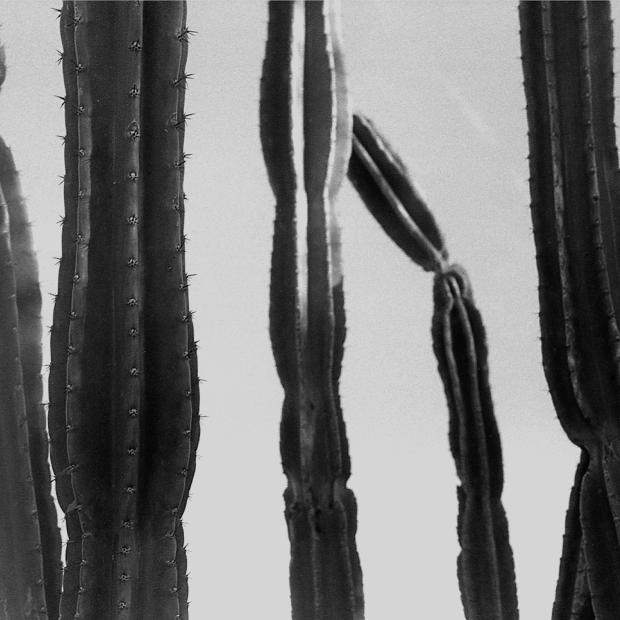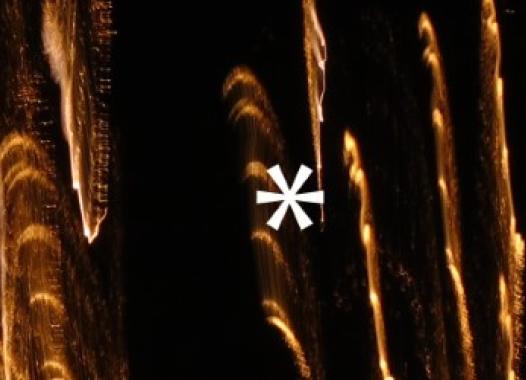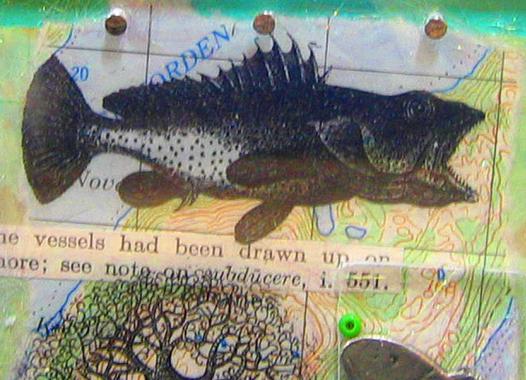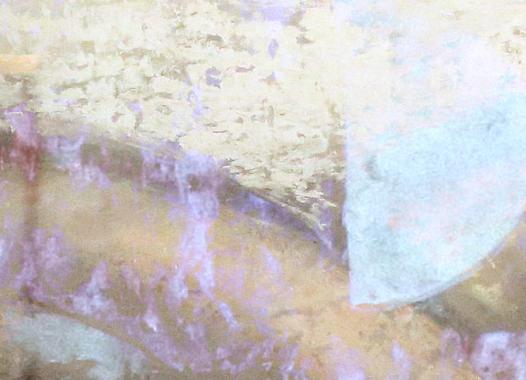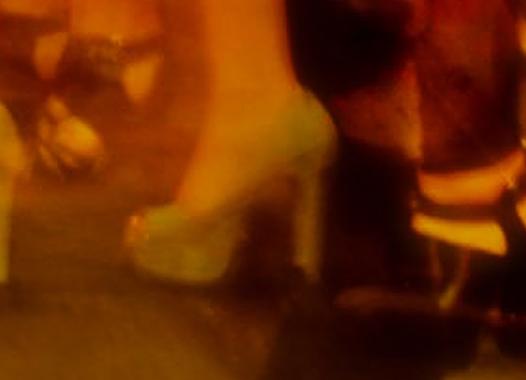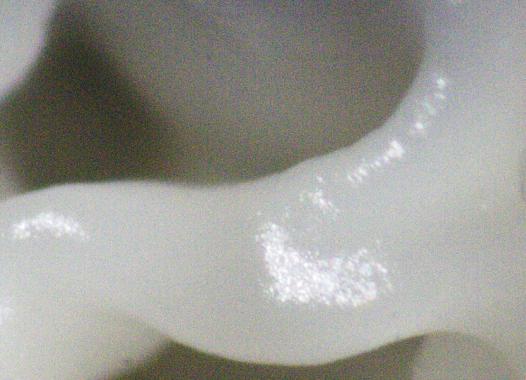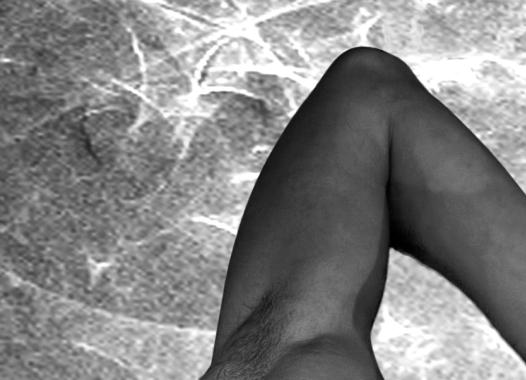
360
Ecocritics have been exceptionally attentive to the ways in which a desire for other-than-human species works affectively in the human species. Indeed one can easily recognize the great influence that early concepts like Yi-Fu Tuan’s topophilia and E. O. Wilson’s biophilia have had on the field in general, as well as on specifically feminist and queer reformulations by Greta Gaard, Catriona Mortimer-Sandilands, Simon Estok, and Nicole Seymour. Although each ecocritic may approach the subject of desire differently, each seems to share the general assumption that desire is profoundly significant for ecocriticism for at least two reasons: first because ecocriticism is fundamentally an ethical project, and second because ethics itself emerges in tandem with desire.
In the general theory ethics comes into being through a mind-bodily desire for the other. When one speaks of an ethical consideration for the other, in other words, one is speaking of a consideration that emerges or filters through desire for that other. For ecocritics this ethical theory should be clear and recognizable in its practical instantiations. Some ecosystems, some species, and even some individuals of a species are valued more or less depending on the valuing subject’s desire for them. A desert may be considered an undesirable landscape and would thus seem to lend itself almost naturally to the storage of nuclear waste. Likewise a swamp may be deemed ugly and easily sliced up by canals and pipelines if it is lucky or completely drained and developed if it is not. Lions, tigers, and bears may be regarded as sexy species and thus granted a whole different range of ethical consideration than their nonmammalian, less sexy cousins. Even some individuals of a conventionally devalued species—a baby rat, for example—may escape the poison for at least a day or two. These examples illustrate the general theory of ethics and desire that I take to be axiomatic: that ethics emerges in tandem with desire. To deny the phenomenon of desire is to deny a fundamental aspect of how ethical considerations and inconsiderations are negotiated.
Although this general ethical theory may be simple to state and evidentiary cases may quickly come to mind, ethics and desire are complicated phenomena both independently and in relation to each other. Neither should be conceived through easy formulas. Ethics and desire always encompass attraction and revulsion, inclination and disavowal, as well as the often-puzzling bond between the two. In this chapter I extend this line of thinking and propose that there is also much at stake, ethically speaking, in how one conceptualizes desire in the first place. If ecocritics have been exceptionally attentive to the ways in which a desire for other-than-human species works affectively in the human species, they also ought to be attentive to the ways in which the concept works to create a boundary between species that can properly be called desiring and those that cannot, as well as the differentiated ethical value afforded by that distinction. I want to explore, in other words, not only desire as a complex human affect in relating to other species but also the way desire itself is figured as a species-specific capacity. At the most basic level I claim that the way one conceptualizes the desiring capacity or incapacity of an other-than-human species influences the way one ethically considers that species. In order to substantiate this claim I address the following questions: What does desire mean for Darwin and then for Freud? How do they understand the capacity to desire across species lines? and, What ethical quandaries result?
Darwin
The question of desire in Darwin is tricky for a number of reasons. To start, the word “desire” itself appears very infrequently in his own published texts. In his long meditations on the sexual lives of animals, for example, Darwin chooses not the phrase “sexual desire” but “sexual selection” to describe what occurs during courtship and mating. Unlike the nebulous or speculative term “desire,” the term “selection” provides Darwin with a lexicon that is more concrete and quantifiable. The creature either selects or it does not, and this fact may or may not have anything to do with what we call desire. So first, one must contend with Darwin’s own strategic avoidance of the term. When the term “desire” does surface, it either seems tangential or Darwin intends for it to mean simply a desire to select or be selected. Desire for Darwin may thus be conceived in the most elementary of ways: the object of the Darwinian creature’s desire is procreative sex, plain and simple. All instincts, habits, and behavior follow from there. Even the desire to survive in Darwin may be read as an effect of a more basic desire to procreate. So second, one must contend with Darwin’s own figuration of desire as simple telos rather than as complex affect.
In such a situation it is not surprising that the great discourses on desire and its vicissitudes—its ontology, multiple meanings, various objects, epistemological problems, and so on—have not been associated with Darwin but instead with someone like Freud. While there are good reasons why Darwin’s and Freud’s reputations have developed in such different ways, the two have more in common than is usually acknowledged. “The theories of Darwin,” Freud writes in his 1925 autobiography, “strongly attracted me, for they held out hopes of an extraordinary advance in our understanding of the world.” [1] Without Darwin there would be no Freud, but to recognize their connection ecocritics must read around Darwin’s own avoidance of the term “desire,” as well as the strict reductionism with which he is often associated.
For Darwin desire works in two ways: in the affective theory (an analysis of how individuals of a species respond to their worlds) and in the evolutionary theory itself (an analysis of how species change over time by means of natural and sexual selection). Investigating desire in these two ways will help bring into focus the fundamental insights with which Freud will eventually grapple, but it will also help expand the ecocritical work of Gaard, Mortimer-Sandilands, Estok, and Seymour that I referenced above. These writers share the general assumption—and I think they are right—that ethics comes into being through a mind-bodily desire for the other, but I would like to propose that there is also much at stake, ethically speaking, in how one conceptualizes desire in the first place.
In a chapter of The Descent of Man called “Mental Powers,” Darwin in 1871 lays the groundwork for his affective theory by making an unequivocal claim about the relative capacities of human and other-than-human animals. “My object,” Darwin proclaims, “is to show that there is no fundamental difference between man and the higher mammals in their mental faculties.”[2] His aim in Descent, as it was the next year in The Expression of the Emotions in Man and Animals, was to think about similarity rather than difference between human and other forms of life. “Darwin’s strategy,” Elizabeth Grosz writes, is to repeat that “whatever characteristic we may regard as a defining one [of the human species] may be found in a less developed form elsewhere in the animal kingdom.”[3] Indeed Darwin is always critical of strict categorical differentiation and peppers his arguments in Descent with incisive comments like this one: “if man had not been his own classifier, he would never have thought of founding a separate order for his own reception.” [4] There is a pithy funniness here to be sure, but the statement also reveals something more profound about Darwin’s scientific method. It reveals an essential hermeneutics of suspicion, an essential distrust of the static structure of the Linnaean classificatory system he inherits, that informs the very basis for his thought. “Our classifications,” Darwin asserts, “will come to be, as far as they can be so made, genealogies.”[5]
Darwin’s shift from classifications to genealogies is necessary for his larger project. Once he makes an argument about generally similar “mental powers,” he can then make an argument about more specific affective capacities. Speaking of the “lower animals” in Expression of the Emotions, Darwin writes, “Terror acts in the same manner on them as on us, causing the muscles to tremble, the heart to palpitate, the sphincters to be relaxed, and the hair to stand on end. Suspicion, the offspring of fear, is eminently characteristic of most wild animals.” [6] Note the kind of evidence Darwin uses here to make his claim; his reasoning will not be metaphysical. The expression of terror is concrete and verifiable, presenting itself in the muscles, the heart, the sphincter, and the hair. One does not have to perform any logical gymnastics to recognize that the expression of emotion verifies the existence of emotion.
In this vein Darwin continues, “Man and the higher animals, especially the Primates, [. . .] have the same senses, intuitions, and sensations—similar passions, affections, and emotions, even the more complex ones, such as jealousy, suspicion, emulation, gratitude, and magnanimity; they practice deceit and are revengeful; they are sometimes susceptible to ridicule, and even have a sense of humor; they feel wonder and curiosity; they possess the same faculties of imitation, attention, deliberation, choice, memory, imagination, the association of ideas, and reason, though in very different degrees.” [7] This rich list of shared capacities begs the inevitable question about where to draw the line. After Darwin, one of the main lines that is supposed to separate human from other animals has been the capacity to speak. But Darwin does not subscribe to that position fully. Like other capacities, the capacity to speak and respond through articulate language can be observed in other-than-human life “though in very different degrees.” Throughout Expression of the Emotions, Darwin suggests that human and other animals share a fundamental desire to communicate, a fundamental desire to express desire through bodily gesture, facial expressions, and vocal sounds even if those sounds are more guttural than linguistic, originating more in the throat than on the tongue.
Interestingly it is the capacity to blush that Darwin identifies as most unique to the human species, including the capacity to speak, ethically deliberate, and even believe in a god. He writes, “Blushing is the most peculiar and the most human of all expressions. Monkeys redden from passion, but it would require an overwhelming amount of evidence to make us believe that any animal could blush.” [8] Why does Darwin draw the line here? “It is not the simple act of reflecting on our own appearance,” Darwin explains, “but the thinking what others think of us, which excites a blush.” [9] Darwin seems to be saying that while other animals do possess self-consciousness, those forms of life are bereft of what we would today call “theory of mind,” or the capacity, present in various degrees even within our own species, to imagine the diverse cognitive attributes of mind in an other.
To have “theory of mind” is not just to have the capacity to be aware of oneself, nor is it just to have the capacity to detect the judgment of others and thus to experience something like shame. Darwin asserts that habit is formed in social creatures in large part through the individual’s attention to the approbation or disapprobation of other members in the group. To have “theory of mind” is to understand that the other may have the same complicated and often contradictory desires that oneself has, and therefore the judgment of others cannot be taken at face value. In other words, since the approbation of the other may be in fact disguised disapprobation and vice versa, one begins to develop a hermeneutics of suspicion for the other. But it gets worse. One also begins to recognize that one’s own hermeneutics of suspicion is equally present in the other. Not only am I suspicious of you and seek to detect your hidden motives or desires, but I understand that you are equally suspicious of me and seek to detect my own. The blush seems to leak out of this situation in which I know that you know that I know something, but we are not going to say anything about it. Within this complicated drama of hiding desire, the blush appears unexpectedly and against the will. Hence the blush is often accompanied by an attempt to conceal the blush with a subsequent bodily motion: a turning away, say, or a blocking of the face with the hand.
The capacity to blush notwithstanding, Darwin is extremely generous in giving affective capacities, as well as multifaceted desire, to other-than-human animals. “Every one has seen how jealous a dog is of his master’s affection,” Darwin writes in Expression of the Emotions, “if lavished on any other creature; and I have observed the same fact with monkeys. This shows that animals not only love, but have desire to be loved.” [10] Darwin’s openness in giving other-than-human animals the capacity to desire in multiple ways, however, seems to butt heads with conventional wisdom in psychoanalysis and even, ironically, some strains of neo-Darwinism. Desire in both of these quarters has tended to be specified—or rather, speciesfied—as a unique capacity of the human species. Psychoanalysis has been complicit in that specification almost by definition. Indeed as a hermeneutics of the psyche (the psukhē, or soul) that fetishizes talking, psychoanalysis almost begins its project with species differentiation and casts desire as a complex affect, one that is much too complex for those creatures outside the realm of humanity to experience.
Psychoanalysis after Freud, however, cannot be held solely responsible for what should be understood as a “speciesist” approach to desire. Ironically some neo-Darwinists, many of whom keep a comfortable distance from Freud, are also complicit in thinking about desire in this way. In order to possess desire, a creature must possess a certain kind of consciousness—a certain “kind of mind,” in Daniel Dennett’s terms––that is capable of reflecting upon its own desire. A creature, in other words, must possess something like a metaconsciousness capable of metadesire that is distinct from instincts, drives, or mindless teleological urges. In his landmark 1962 study called “What Are Affects?” Silvan Tomkins likewise echoes this approach and begins with the following: “All animals ‘want’ but only man concerns himself with the nature of his own wants.”[11] To provide a theory of affect, it seems, Tomkins must first assert a difference in kind between human and other animals, between want and metawant. What is refreshing about Darwin’s approach to desire—to Tomkinsian “want”—is that it does not take the human/other dualism as its starting point. Darwin is writing outside of that hard split, and his ethical approach to the many species surrounding him grows out of that conceptualization.
If desire is a significant part of Darwin’s affective theory, it is equally so for the evolutionary theory itself. In 1859, in a key moment of On the Origin of Species, Darwin writes, “Nothing is easier to admit in words the truth of the universal struggle for life, or more difficult—at least I have found it so—than constantly to bear this conclusion in mind. Yet, unless it be thoroughly engrained in the mind, I am convinced that the whole economy of nature, with every fact on distribution, rarity, abundance, extinction, and variation, will be dimly seen or quite misunderstood.”[12] As many critics have noted, Darwin’s Origin of Species is not really about the origin of species at all nor is it even about speciation exactly, or locating the precise moment when species A evolves into species B. Instead it is about discovering and describing the force behind past and always-present changes in “the whole economy of nature.” Darwin’s question is very complex, but his answer, at least in this passage, is simple. Darwin claims that “the universal struggle for life” is the force behind every instance of “distribution, rarity, abundance, extinction, and variation” of life on planet Earth.
In some sense Darwin is being quintessentially Darwinian here and presents his theory in what will become the most recognizable form. But how does desire fit into this scientific weltanschauung? For Darwin the thing that an individual of a species primarily desires is to go on being an individual of a species. The object, as it were, of desire is to survive as a desiring subject. The additional desires that Darwin traces in the affective theory––to love and be loved, for example, or to communicate––are layered on top of this even more foundational one. But figuring desire in this way departs profoundly from the standard in both evolutionary and psychoanalytical thought where desire is figured as fundamentally oriented toward an external object. For Darwin, in order to understand life, one must first recognize a desire that has no specific object at all, save itself. This conceptualization, however, should not be understood as a variety of simple egotism or narcissism in the traditional sense. Although Darwin rarely mentions the history of philosophy, the way he conceptualizes desire as fundamentally a kind of self-desire seems to bear close relation to the notion of conatus. In his 1677 work on Ethics, for example, Spinoza contributes to the long history of this particular––and peculiar––notion by arguing that the essence of all beings, organic and inorganic alike, is a striving to persevere in its own being. A being is essentially a desire to go on being a being.
To desire to go on being a being, however, does not in itself explain evolutionary change. To strive to persevere in one’s own being does not in itself explain speciation. For Darwin there will always be checks and balances, obstacles and disappointments, and a whole lot of death. There will always be, in other words, natural selection. Darwin’s theory of natural selection, then, should be understood as a rejoinder to a primary desire to go on being a being, a rejoinder to the philosophical notion of conatus. If for Darwin there is a universal desire for life on the one hand, there will also be a natural selection on the other. Hence there is the struggle for life that ensures that a desire for life cannot go on unchecked. Each and every form of life as we know them today—from the most impressive megafauna to the tiniest microbe—and their interactions with each other, “the whole economy of nature,” has been enabled, has come to be, through persistent biological crises on scales both large and small.
Of course Darwin does not explain the evolution of species by means of natural selection alone. Sexual selection, too, figures prominently in his theory of how forms of life change over time. In fact by the time Darwin publishes Descent of Man in 1871, the theory of sexual selection that at first seems to supplement natural selection in Origin of Species actually seems to have supplanted it. The competition within the species for the opportunity to mate takes priority over the competition between species for the opportunity to survive. In this way species come to be not only through environmental––that is, extraspecific factors––but through intraspecific ones as well. In the classic theory Darwin tracks the myriad ways in which the males of the species compete to attract the attention of the female who will do the selecting. Think of Darwin’s long descriptions of the plumage of birds, especially of peacocks: the desire to attract changes the bodily form and behavior of the desiring species. This change is not immediate, of course, but happens instead over generations as variations are selected and survive.
For Darwin the concept of desire is integral to the evolution of species in terms of both natural selection and sexual selection. What a species is, its ontology, may be understood as an internal network of desire. Today this relationship between desire and species may even be more apparent when most biology textbooks have adopted Ernst Mayr’s definition of species. First formulated in 1942 (but with precedents in Descent of Man), Mayr famously defined a species as a grouping of life that is capable of interbreeding, a definition that suggests a species desires itself and through that desire consolidates itself as a species. Ecocritics may find fault here for this theory’s problematic reductiveness, as narrowing the Lebenswelt into its procreative aim. But Darwin nonetheless makes an important move in unequivocally giving other-than-human species the capacity to desire. Contra E. O. Wilson, in other words, biophilia will not be a unique capacity of the human species. The concept of desiring species instead will be infinitely more complicated, multifaceted, and expressive than many ecocritics imagine it to be.
Freud
The question of desire in Freud is tricky, as it was in Darwin, but for a different reason. If the word “desire” appears infrequently in Darwin, readers will encounter the complete opposite in Freud. Indeed it is no exaggeration to claim that Freud is singularly obsessed with desire as the psychological concept par excellence. For this reason it is difficult to find a stable definition or consistent conceptualization of desire throughout his long and prolific career. Freud also uses diverse terminology to describe the phenomenon of desire; “wishes,” “wants,” “instincts,” and “drives” all form part of the vocabulary. Despite this trickiness, I want to claim that Freud adopts the basic story about desire implicit in Darwin and opens it up to infinite complication. In his 1915 paper “Instincts and Their Vicissitudes,” for example, Freud identifies the same two groups of “primal instincts” that Darwin organized his entire theory around: “the ego, or self-preservative, instincts [self-desire] and the sexual instincts [desire for the other].” [13] Freud adopts Darwin’s primary insights and adds layer upon layer upon them; he dramatizes the exceptions at almost every turn. In this way Freud does not turn away from Darwin’s thought; he intensifies it.
In 1905 Freud famously argues in Three Essays on the Theory of Sexuality against the “popular opinion” that human sexual desire is “absent in childhood,” that it begins at puberty, and that its sole aim is copulation between two oppositely sexed individuals of the human species.[14] Against this backdrop, Freud instead makes two sweeping assertions. The first is that children, like other-than-human animals, are “polymorphously perverse” because the objects of their desire, as well as their own erogenous zones, are unrestricted by decorum and appropriateness.[15] The second is that puberty is indeed significant in the sexual development of the human individual, but it is not as simple as “the normal picture” would lead us to believe. In one of the key passages Freud writes, “The normal sexual aim is regarded as being the union of the genitals in the act known as copulation, which leads to a release of the sexual tension and a temporary extinction of the sexual instinct––a satisfaction analogous to the sating of hunger. But even in the most normal sexual process we may detect rudiments which, if they had developed, would have led to the deviations described as ‘perversions.’”[16] By “rudiments” Freud means all the behaviors that occur outside “the union of the genitals,” such as looking, touching, kissing, sucking, stroking, and so on. Because there exist forms of desire outside the ostensible norm even in the most normal of circumstances, Freud instructs his audience to “loosen the bond that exists in our thoughts between instinct and object.”[17] When psychoanalysts think of sexual desire, Freud insists, they ought not imagine a simple story of male and female genitals coming together, orgasm, and the production of offspring.
At first glance Freud in Three Essays seems to break fundamentally with Darwin, but only if Darwin is read as a reproductive essentialist and Freud as the opposite. In Three Essays Freud argues that puberty is the key moment in the life of the individual when “the sexual instinct is now subordinated to the reproductive function.”[18] With the maturity of sperm and egg during puberty, in other words, the majority of human bodies come under a different kind of pressure than their original polymorphous perversity. But claiming that the sexual instinct is “subordinated” to reproduction during puberty does not mean that sexual desire is fully or even strongly controlled by it. Subordination for Freud will always also imply insubordination. For this reason Freud writes, “Sex is a biological fact which, although it is of extraordinary importance in mental life, is hard to grasp psychologically.”[19] This difficulty arises because sexual desires are overdetermined, they consist of multiple aims and objects that are often in conflict, and they operate on various conscious and unconscious levels of the mind.
Freud is most famous for these kinds of contributions to a psychoanalysis of the individual, but he also asks profound questions about the evolution of the human species. He seeks to uncover the processes not only by which the human person makes its way from birth through life and into death but also by which the human species evolves from nature to culture, from animality to civilization. In 1927 in The Future of an Illusion Freud presents his approach to this statement: “the principal task of civilization [Kultur], its actual raison d’être, is to defend us against nature.”[20] Two years later, while writing Civilization and Its Discontents, Freud repeats his crucial definition: “the word ‘civilization’ describes the whole sum of the achievements and regulations which distinguish our lives from those of our animal ancestors and which serve two purposes––namely to protect men against nature and to adjust their mutual relations.”[21] In presenting the dyad in this way, in choosing classifications over genealogies, Freud departs radically from his predecessor. Unlike Freud, Darwin would argue that human and other-than-human social creatures have culture––and indeed civilization––if the measure of that phenomenon is a species’s effectiveness in protecting itself against extraspecific forces (“nature”) and in adjusting its intraspecific ones (its “mutual relations”).
Freud conceptualizes this fundamental difference, the break between the human and all other species, as a moment locatable in evolutionary history and open to psychoanalytical explanation. Freud approaches this moment in two main ways. The first comes in 1913 with Totem and Taboo, Freud’s most deliberate engagement with Darwin, in which he imagines a “primal horde” of humans living in the wild. It is a family, with the males competing for control over their female sexual objects. For Freud civilization arises at the moment when the brothers, full of incestuous desire, ban together and kill their tyrannical father. The figurative guide into this moment of patricide of course is the myth of Oedipus, which Freud infuses with evolutionary significance. The primal killing––and indeed eating––of the father, enacted once and then repeated over and over again in actual and ceremonial form, has a number of profound effects: the prohibition against incest and familial murder, the origin of totemic religion, and the social organization of the family, with all its rules and regulations that will become the prototype for civilization writ large.[22]
The second––and perhaps more plausible––psychoanalytical explanation of the origin of civilization comes in 1929 with Civilization and Its Discontents. “The diminution of the olfactory stimuli,” Freud writes, “seems itself to be a consequence of man’s raising himself from the ground, of his assumption of an upright gait; this made his genitals, which were previously concealed, visible and in need of protection, and so provoked feelings of shame in him.”[23]
Unlike in Totem and Taboo, civilization originates here the moment the human species begins to walk upright. This new posture leads to the desire to conceal desire, to shame, to “organic repression” and the “renunciation of instinct.”[24] The ultimate outcome of this new posture is the mark of civilized animality: permanent ambivalence cum gnawing discontent. But there is good news. Through the process of sublimation the Freudian human “endeavors to find substitutes––substitute objects and substitute acts––in place of the prohibited ones.”[25] All of these substitutes make up the realm of what is properly called cultural.
Freud’s claims in Totem and Taboo and Civilization and Its Discontents beg many questions about the author’s logic and historical accuracy, but the two books nonetheless have many lessons to teach. Totem is primarily an analysis of species differentiation, but it is also a meditation on species interaction. The totem animal for Freud reveals a human desire for other species, a fundamental biophilia, but Freud makes clear that the animal’s value is primarily utilitarian, springing as it does from its usefulness in expressing complex psychological structures, wishes, and fantasies that remain largely hidden in conscious life. Further, like the actual father that is, in Freud’s vision of the primal horde, killed and eaten, missed and mourned, the totem animal is filled with ambivalence. Think of Rat Man, Wolf Man, and Little Hans. Each of these characters maintains an uneasy relation to the other-than-human species with which they are so intimately attached. But there is an ethical problem with this picture. Freud is able to give other-than-human species strictly utilitarian value by making two moves: first, by setting up an essential and unbridgeable gap in kind (rather than degree) between human and all other life-forms and, second, by denying or at least diminishing the capacity of other-than-human life-forms to desire and repress desire. These two moves here are as remarkably unDarwinian as they are ethically questionable.
Freud’s most haunting theory, and real departure from Darwin, though, is mapped out in 1920 in one of his most controversial texts, Beyond the Pleasure Principle, which argues that the ultimate aim of all life is not to live but to die. Freud writes, “If we are to take it as a truth that knows no exception that everything living dies for internal reasons—becomes inorganic once again—then we shall be compelled to say that ‘the aim of all life is death.’”[26] For Darwin, the threats to the survival of the individual always come from the outside; it is the external world that ultimately does the creature in. The predator, the chance change in climate, the contagious disease, the accidental fall: all these unfortunate events bear into and come to inhabit the individual in deadly ways from the outside. For Freud in 1920 the propulsion into death does not come from the external world alone; there will be an internal mechanism that intrinsically generates the death of the individual. The struggle is not simply or unilaterally between the being and the world but within the being itself. How does Freud reach this conclusion? There is first the historical context of the text; he is writing in the aftermath of World War I, an event in the history of Homo sapiens during which a resident violence in the species most awfully turned back in upon itself, all the while hinting that it would do so again very soon. This historical context should not be ignored, but there is also something within the internal logic of his whole lifework that leads him to this conclusion almost inevitably.
Freud begins the book by summarizing what he means by the pleasure principle (Lustprinzips). “In the theory of psychoanalysis,” he writes, “we have no hesitation in assuming that the course taken by mental events is automatically regulated by the pleasure principle . . . that is, with an avoidance of unpleasure or a production of pleasure.”[27] But Freud asks if there is another principle at work in mental life beyond this principle. He is not asking, though, about the reality principle, which he had already described in his 1911 paper “Formulations on the Two Principles of Mental Functioning.” He is not asking about a temporary postponement of satisfaction to meet a present exigency in exchange for an even greater satisfaction in the long run. He is asking instead about a desire for unpleasure (Unlust) that is enacted and reenacted during the course of a human lifetime. This kind of compulsion to repeat, Freud argues, is “more primitive, more elementary, more instinctual than the pleasure principle which it overrides.”[28]
Freud’s question about what he will eventually call the death instinct stems from his vision of the very first life-forms on this planet. “The elementary living entity,” Freud writes, “would from its very beginning have had no wish to change; if conditions remained the same, it would do no more than constantly repeat the same course of life.”[29] This vision of elementary species leads Freud to redefine the concept of instinct as “an urge inherent in organic life to restore an earlier state of things which the living entity has been obliged to abandon under the pressure of external disturbing forces.” [30] This “inertia,” these “conservative instincts which impel towards repetition,” however, must be considered in conjunction with “others which push forward towards progress and the production of new forms.”[31]
Freud concludes that self-preservative instincts are “component instincts whose function it is to assure that the organism shall follow its own path to death, and to ward off any possible ways of returning to inorganic existence other than those which are immanent in the organism itself.”[32] By extending the capacity to desire across species lines, Freud is following in Darwin’s footsteps. By including a kind of death wish in that desire, however, Freud seems to write against the Darwinian grain. But it bears repeating, especially in the face of vast anthropogenic extinction all across the planet, that Freud makes a significant qualification in his claim. Life-forms do not desire death simply and without condition. They desire to die in their own way. The ethical imperative here may be to support the material conditions necessary for human and other-than-human species not only to do their own living but also to do their own dying without interference.
Ecocritics have used the concepts of topophilia and biophilia to highlight the human desire for places and other-than-human species, and these concepts have become indispensable for their ethical project. But ecocritics ought not imagine these philias as naming straightforward human desires, nor ought they consider them exclusive to the human species. Indeed one way to diminish the human’s ethical responsibility toward the other is to diminish that other’s desiring capacity. Darwin and Freud seem to resist this move and give other-than-human species a complex affective life. For them the desire between and among species is the result of complex structures of ecological and evolutionary history that are simultaneously preservative and destructive, erotogenic and thanatogenic, in nature. An affectively grounded ecocriticism would do well in tracking exactly how this drama of desiring species plays out in life and literature.
Bibliography
Darwin, Charles. Darwin: A Norton Critical Edition. Edited by Philip Appleman. 3rd ed. New York: Norton, 2001.
———. The Descent of Man. 1871. New York: Penguin, 2004.
———. The Expression of the Emotions in Man and Animals. 1872. New York: Penguin, 2009.
———. On the Origin of Species. 1859. In Darwin: A Norton Critical Edition. Edited by Philip Appleman. 3rd ed. New York: Norton, 2001.
Dennett, Daniel. Kinds of Minds: Toward an Understanding of Consciousness. New York: Basic, 1996.
Estok, Simon. Ecocriticism and Shakespeare: Reading Ecophobia. New York: Palgrave, 2011.
Freud, Sigmund. An Autobiographical Study. 1925. In The Freud Reader. Edited by Peter Gay. Translated by James Strachey. New York: Norton, 1989.
———. Beyond the Pleasure Principle. 1920. Translated by James Strachey. New York: Norton, 1989.
———. Civilization and Its Discontents. 1929. Translated by James Strachey. New York: Norton, 1989.
———. The Freud Reader. Edited by Peter Gay. Translated by James Strachey. New York: Norton, 1989.
———. The Future of an Illusion. 1927. Translated by James Strachey. New York: Norton, 1989.
———. Totem and Taboo. 1913. Translated by James Strachey. New York: Norton, 1989.
Gaard, Greta. “Toward a Queer Ecofeminism.” Hypatia: A Journal of Feminist Philosophy 12, no. 1 (1997): 114–37.
Grosz, Elizabeth. The Nick of Time: Politics, Evolution, and the Untimely. Durham: Duke University Press, 2004.
Mortimer-Sandilands, Catriona. “Desiring Nature, Queering Ethics: Adventures in Erotogenic Environments.” Environmental Ethics 23, no. 1 (2001): 169–88.
Seymour, Nicole. Strange Natures: Futurity, Empathy, and the Queer Ecological Imagination. Urbana: University of Illinois Press, 2013.
Spinoza, Benedict de [Baruch]. Ethics. 1677. Translated by Edwin Curley. New York: Penguin, 1996.
Tomkins, Silvan. “What Are Affects?” In Shame and Its Sisters: A Silvan Tomkins Reader. Edited by Eve Kosofsky Sedgwick and Adam Frank, 33–74. Durham: Duke University Press, 1995.
Wilson, E. O. Biophilia: The Human Bond with Other Species. Cambridge ma: Harvard University Press, 1984.
[1] Freud, Autobiographical Study, 4.
[1] Freud, Autobiographical Study, 4.
[2] Darwin, Descent of Man, 86.
[3] Grosz, Nick of Time, 61.
[4] Darwin, Descent of Man, 176.
[5] Darwin, Origin of Species, 172.
[6] Darwin, Expression of the Emotions, 90.
[7] Darwin, Expression of the Emotions, 100.
[8] Darwin, Expression of the Emotions, 286.
[9] Darwin, Expression of the Emotions, 300.
[10] Darwin, Expression of the Emotions, 92.
[11] Tomkins, “What Are Affects?,” 33.
[12] Darwin, Origin of Species, 108.
[13] Freud, “Instincts and Their Vicissitudes,” in The Freud Reader, 568.
[14] Freud, Three Essays, in The Freud Reader, 240.
[15] Freud, Three Essays, in The Freud Reader, 268.
[16] Freud, Three Essays, in The Freud Reader, 247.
[17] Freud, Three Essays, in The Freud Reader, 246.
[18] Freud, Three Essays, in The Freud Reader, 279.
[19] Freud, Civilization and Its Discontents, 61.
[20] Freud, Future of an Illusion, 19.
[21] Freud, Civilization and Its Discontents, 42.
[22] Freud, Totem and Taboo, 176.
[23] Freud, Civilization and Its Discontents, 54.
[24] Freud, Civilization and Its Discontents, 52.
[25] Freud, Civilization and Its Discontents, 39.
[26] Freud, Beyond the Pleasure Principle, 45–46.
[27] Freud, Beyond the Pleasure Principle, 3.
[28] Freud, Beyond the Pleasure Principle, 25.
[29] Freud, Beyond the Pleasure Principle, 46.
[30] Freud, Beyond the Pleasure Principle, 43 (original emphasis).
[31] Freud, Beyond the Pleasure Principle, 43–44.
[32] Freud, Beyond the Pleasure Principle, 47.
Join the colloquy
Join the colloquy
Queer Environmentalities
more
Scholars working to bring these two fields together argue that each has undermined its central goals by keeping aloof from the other: That ecological criticism has been fundamentally unable to broach the concerns of queer theory when it has privileged a version of "natural" that foregrounds heteronormativity; and that queer theory, for its part, has had no room for a consideration of the environment because the liberatory impulse of queerness has gotten much of its momentum from the turn away from nature, the de-coupling of human choices from a reigning "natural" order. But, queer environmentalists ask: Can an ecocritical enterprise—one aimed at revealing and reversing the destruction brought about by human-centric conceptions of environment—hope for a success if it fails to take into consideration the injustices of imagining the human as male and heterosexual?
This Colloquy takes its title from Robert Azzarello’s 2012 book Queer Environmentality, in which Azzarello argues that a synthesis of ecocriticism and queer theory can reveal that "the questions and politics of human sexuality are always entwined with the questions and politics of the other-than-human world." Criticism that attends to our queer environmentalities can enable profound resistances to, as Azzarello puts it, "conventional notions of the strange matrix between the human, the natural, and the sexual." Such approaches can reveal the Anthropocene as not only a period in which humankind has altered nature, but also as a period in which humankind has constructed the definitions of nature, and can throw into relief unarticulated valuations of scientific discourse and identity politics in making humans’ relationships with the non-human mean.
Since their budding in the 1990s in the pioneering work of ecofeminist critics such as Catriona Sandilands and Greta Gaard, queer-ecological methods have gained momentum across humanistic disciplines, periods, and national boundaries. This Colloquy highlights exciting new work in literary and cultural histories and presents dance and performance, film, music, urban studies, and political ecology. It showcases a range of approaches, from postcolonial to trans theory, to objects of study spanning our aesthetic productions and our political, economic, and rhetorical responses to the challenges of managing climate change and natural resources. The pieces featured here expand conceptions of environment and sexuality to include the human(-made) and the non-human, the intersections of bodies' outsides and insides, minds and discourses, making possible new ways to think filiation and affiliation, desire and sex, realisms and un-realisms, aesthetics and politics.
